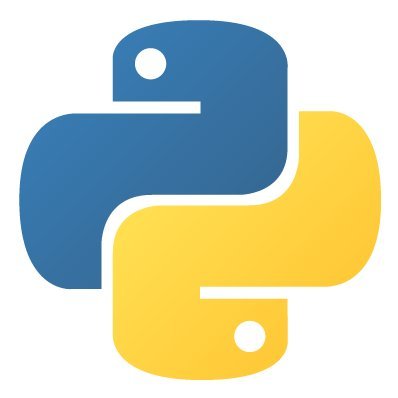
Python Full-Stack Developer
@Python_FSD
💻 Python Full-Stack Dev | Django • FastAPI • Flask | React.js • Vue.js | AI/ML | DBs & Cloud Deploy | Tech Educator 🚀| #Data #Cloud #Innovation
⛔ Break & Continue Control how loops behave. 👉 break stops the loop early, continue skips current iteration. 📘 Example: for i in range(5): if i == 3: break print(i) #Python #Coding #LearnToCode #100DaysOfCode #PythonFSD
🔁 Loops in Python Used to repeat actions until a condition is met. 👉 for loops iterate over sequences, while loops run until False. 📘 Example: for i in range(5): print(i) #Python #Coding #LearnPython #PythonTips #PythonFSD #100DaysOfCode #djangoframework
🔹else statement Runs a block of code when none of the conditions are True. Example: marks = 40 if marks >= 60: print("Passed") else: print("Failed") #Python #Coding #LearnPython #PythonTips #100DaysOfCode #PythonFSD
🔹elif statement Used to check multiple conditions when the previous one is False. Example: marks = 75 if marks >= 90: print("Excellent") elif marks >= 60: print("Good") Comment your answer😊 - #Python #Coding #LearnPython #100DaysOfCode #PythonTips #PythonFSD
🔹 if statement : Executes a block of code only if the condition is True. Example: age = 18 if age >= 18: print("You can vote") #Python #Coding #LearnPython #PythonTips #100DaysOfCode #PythonFSD
🧠 What are Conditional Statements in Python? Conditional Statements help your code make decisions based on conditions. They check True / False expressions to decide what to execute. 🔹 Types of Conditional Statements: 1. if 2. elif 3. else #Python #100DaysOfCode #PythonTips
🪞 Identity Operators in Python Used to compare memory locations (not values). 🔹 is → True if both refer to same object 🔹 is not → True if not the same object 📘 Example: x = [1, 2] y = x print(x is y) # True #Python #Coding #100DaysOfCode #PythonTips #PythonFSD
Membership Operators in Python Used to test if a value is present in a sequence. 🔹 in → Returns True if value exists 🔹 not in → Returns True if value doesn’t exist nums = [1, 2, 3] print(2 in nums) # True print(5 not in nums) # True #Python #LearnPython #100DaysOfCode
⚙️ Bitwise Operators in Python Used to perform operations on binary (bits) of numbers. 🔹 & → AND 🔹 | → OR 🔹 ^ → XOR 🔹 ~ → NOT 🔹 << → Left Shift 🔹 >> → Right Shift #Python #Coding #LearnPython #100DaysOfCode #PythonTips #PythonFSD
What are Assignment Operators in Python? Used to assign values to variables. 🔹 = → Assigns value 🔹 += → Add & assign 🔹 -= → Subtract & assign 🔹 *= → Multiply & assign 🔹 /= → Divide & assign Example: x = 5 x += 3 print(x) # 8 #Python #Coding #PythonTips #100DaysOfCode
Logical Operators in Python Used to combine conditional statements. 🔹 and → Returns True if both conditions are True 🔹 or → Returns True if at least one condition is True 🔹 not → Reverses the result (True → False, False → True) #Python #Coding #PythonTips #100DaysOfCode
Comparison Operators in Python ⚖️. Used to compare two values — results in True or False. 🔹 == → Equal to 🔹 != → Not equal to 🔹 > → Greater than 🔹 < → Less than 🔹 >= → Greater or equal 🔹 <= → Less or equal #Python #Coding #LearnToCode #PythonBasics #PythonFSD
Arithmetic Operators in Python Used for basic math operations. 🔹 + → Addition 🔹 - → Subtraction 🔹 * → Multiplication 🔹 / → Division 🔹 % → Modulus (remainder) 🔹 ** → Exponentiation 🔹 // → Floor Division #Python #Coding #LearnToCode #100DaysOfCode #PythonFSD
What are Operators in Python ? Operators are symbols that perform actions on variables & values. Types of Operators: 🔹 Arithmetic 🔹 Comparison 🔹 Logical 🔹 Assignment 🔹 Bitwise 🔹 Membership 🔹 Identity #Python #Coding #LearnToCode #100DaysOfCode #PythonFSD
What is a Function in Python? A function is a block of code that runs only when called — used to reuse logic easily. def greet(): print("Hello, World!") greet() Functions = less code, more power ⚡ #Python #Coding #LearnToCode #100DaysOfCode #PythonFSD
What is the correct way to define a string in Python?
More Python Data Types Python includes more powerful data types: 🔹 list → ordered, changeable collection [1, 2, 3] 🔹 tuple → ordered, unchangeable collection (1, 2, 3) 🔹 set → unordered, unique items {1, 2, 3} 🔹 dict → key-value pairs {"name": "Alex", "age": 25} #Python
What are Data Types? There are several data types in Python — here are a few basic ones: 🔹 int → whole numbers (10) 🔹 float → decimals (3.14) 🔹 str → text ("Hello") 🔹 bool → True / False These are the foundation of every Python program. 🧠 #Python #Coding #100DaysOfCode
What are variables ? In Python, a variable is just a name that stores a piece of information. message = "Hello, world!" Here: message is the variable name. "Hello, world!" is the value stored in that variable. #Python #Coding #FullStack #WebDevelopment #LeetCode #100DaysOfCode
United States Trends
- 1. #AEWDynamite 15.3K posts
- 2. #Survivor49 2,588 posts
- 3. #SistasOnBET 1,871 posts
- 4. #iubb 1,489 posts
- 5. Athena 10.7K posts
- 6. #ALLCAPS 1,477 posts
- 7. Binnington 1,714 posts
- 8. Savannah 5,191 posts
- 9. Godzilla 27.7K posts
- 10. Mitchell Robinson N/A
- 11. Ovechkin 6,232 posts
- 12. Cade Cunningham 1,962 posts
- 13. Harley 11.5K posts
- 14. Unplanned 4,026 posts
- 15. Lamar Wilkerson N/A
- 16. Randle 3,065 posts
- 17. Claudio 49.1K posts
- 18. Paige 27.3K posts
- 19. Josh Okogie N/A
- 20. Jalen Duren 1,296 posts
Something went wrong.
Something went wrong.





